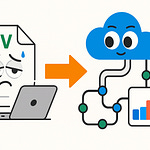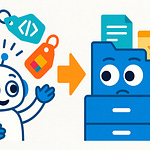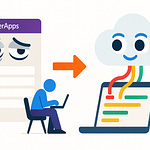Ever notice how the fastest way to ship code is usually the messiest? Logging scattered across controllers, validation stuffed into random methods, and authentication bolted on wherever it happens to work. It feels fast in the moment, but before long the codebase becomes something no one wants to touch.
Dirty code wins the short-term race, but it rarely survives the marathon. In this session, we’ll unpack how cross-cutting concerns silently drain your productivity. You’ll hear how middleware and decorator-style wrappers let you strip out boilerplate and keep business logic clean. So how do we stop the rot without slowing down?
Why Messy Code Feels Like the Fastest Code
Picture this: a small dev team racing toward a Friday release. The product owner wants that new feature live by Monday morning. The tests barely pass, discussions about architecture get skipped, and someone says, “just drop a log here so we can see what happens.” Another teammate copies a validation snippet from a different endpoint, pastes it in, and moves forward. The code ships, everyone breathes, and for a moment, the team feels like heroes.
That’s why messy code feels like the fastest path. You add logging right where it’s needed, scatter a few try-catch blocks to keep things from blowing up, and copy in just enough validation to stop the obvious errors. The feature gets out the door. The business sees visible progress, users get what they were promised, and the team avoids another design meeting. It’s immediate gratification—a sense of speed that’s tough to resist.
But the cost shows up later. The next time someone touches that endpoint, the logging you sprinkled in casually takes up half the method. The validation you pasted in lives in multiple places, but now each one fails the same edge case in the same wrong way. Debugging a new issue means wading through repetitive lines before you even see the business logic. Something that once felt quick now hides the real work under noise.
Take a simple API endpoint that creates a customer record. On paper, it should be clean: accept a request, build the object, and save it. In practice, though, logging lives inside every try-catch block, validation code sits inline at the top of the method, and authentication checks are mixed in before anything else can happen. What should read like “create customer” ends up looking like “log, check, validate, catch, log again,” burying the actual intent. It still functions, it even passes tests, but it no longer reads like business logic—it reads like clutter.
So why do teams fall into this pattern, especially in startup environments or feature-heavy sprints? Because under pressure, speed feels like survival. We often see teams choose convenience over architecture when deadlines loom. If the backlog is full and stakeholders expect weekly progress, “just make it work now” feels safer than “design a pipeline for later.” It’s not irrational—it’s a natural response to immediate pressure.
And in the short term, it works. Messy coding collapses the decision tree. Nobody has to argue about whether logging belongs in middleware or whether validation should be abstracted. You just type, commit, and deploy. Minutes later, the feature is live. That collapse of choice gives the illusion of speed, but each shortcut adds weight. You’re stacking boxes in the hallway instead of moving them where they belong. At first it’s faster. But as the hallway fills up, every step forward gets harder.
Those shortcuts don’t stay isolated, either. With cross-cutting tasks like logging or authentication, the repetition multiplies. Soon, the same debug log line shows up in twenty different endpoints. Someone fixes validation logic in one spot but misses the other seven. New hires lose hours trying to understand why controllers are crammed with logging calls and retry loops instead of actual business rules. What once supported delivery now taxes every future change.
That’s why what feels efficient in the moment is really a deferred cost. Messy code looks like progress, but the debt it carries compounds. The larger the codebase grows, the heavier the interest gets, until the shortcuts block real development. What felt like the fast lane eventually turns into gridlock.
The good news: you don’t have to choose between speed and maintainability.
The Rise of Cross-Cutting Concerns
So where does that slowdown really come from? It usually starts with something subtle: the rise of cross-cutting concerns.
Cross-cutting concerns are the kinds of features every system needs but that don’t belong inside business logic. Logging, authentication, validation, audit trails, exception handling, telemetry—none of these are optional. As systems grow, leadership wants visibility, compliance requires oversight, and security demands checks at every step. But these requirements don’t naturally sit in the same place as “create order” or “approve transaction.” That’s where the clash begins: put them inline, and the actual intent of your code gets diluted.
The way these concerns creep in is painfully familiar. A bug appears that no one can reproduce, so a developer drops in a log statement. It doesn’t help enough, so they add another deeper in the call stack. Metrics get requested, so telemetry calls are scattered inside handlers. Then security notes a missing authentication check, so it’s slotted in directly before the service call. Over time, the method reads less like concise business logic and more like a sandwich: infrastructure piled on both ends, with actual intent hidden in the middle.
Think of a clean controller handling a simple request. In its ideal form, it just receives the input, passes it to a service, and returns a result. Once cross-cutting concerns take over, that same controller starts with inline authentication, runs manual validation, writes a log, calls the service inside a try-catch that also logs, and finally posts execution time metrics before returning the response. It still works, but the business purpose is buried. Reading it feels like scanning through static just to find one clear sentence.
In more regulated environments, the clutter grows faster. A financial application might need to log every change for auditors. A healthcare system must store user activity traces for compliance. Under data protection rules like GDPR, every access and update often requires tracking across multiple services. No single piece of code feels extreme, but the repetition multiplies across dozens or even hundreds of endpoints. What began as a neat domain model becomes a tangle of boilerplate driven by requirements that were never part of the original design.
The hidden cost is consistency. On day one, scattering a log call is harmless. By month six, it means there are twenty versions of the same log with slight differences—and changing them risks breaking uniformity across the app. Developers spend time revisiting old controllers, not because the business has shifted, but because infrastructure has leaked into every layer. The debt piles up slowly, and by the time teams feel it, the price of cleaning up is far higher than it would have been if handled earlier.
The pattern is always the same: cross-cutting concerns don’t crash your system in dramatic ways. They creep in slowly, line by line, until they smother the business logic. Adding a new feature should be a matter of expressing domain rules. Instead, it often means unraveling months of accumulated plumbing just to see where the new line of code belongs.
That accumulation isn’t an accident—it’s structural. And because the problem is structural, the answer has to be as well. We need patterns that can separate infrastructure from domain intent, handling those recurring concerns cleanly without bloating the methods that matter.
Which raises a practical question: what if you could enable logging, validation, or authentication across your whole API without touching a single controller?
Where Design Patterns Step In
This is where design patterns step in—not as academic buzzwords, but as practical tools for keeping infrastructure out of your business code. They give you a structured way to handle cross-cutting concerns without repeating yourself in every controller and service. Patterns don’t eliminate the need for logging, validation, or authentication. Instead, they move those responsibilities into dedicated structures where they can be applied consistently, updated easily, and kept separate from your domain rules.
Think back to those bloated controllers we talked about earlier—the ones mixing authentication checks, logs, and error handling right alongside the actual business process. That’s not unusual. It’s the natural byproduct of everyone solving problems locally, with the fastest cut-and-paste solution. Patterns give you an alternative: instead of sprinkling behaviors across dozens of endpoints, you centralize them. You define one place—whether through a wrapper, a middleware component, or a filter—and let it run the concern system-wide. That’s how patterns reduce clutter while protecting delivery speed.
One of the simplest illustrations is the decorator pattern. At a high level, it allows you to wrap functionality around an existing service. Say you have an invoice calculation service. You don’t touch its core method—you keep it focused on the calculation. But you create a logging decorator that wraps around it. Whenever the calculation runs, the decorator automatically logs the start and finish. The original service remains unchanged, and now you can add or remove that concern without touching the domain logic at all. This same idea works for validation: a decorator inspects inputs before handing them off, throwing errors when something looks wrong. Clean separation, single responsibility preserved.
Another powerful option, especially in .NET, is middleware. Middleware is a pipeline that every request flows through before it reaches your controller. Instead of repeating authentication checks in every endpoint, you add an authentication middleware once. From then on, all requests are authenticated consistently. The same applies to telemetry: instead of timing execution in ten different places, you let middleware record request durations automatically. When requirements change—like adjusting authentication rules—you update one middleware component rather than dozens of controllers. The pattern ensures consistency and keeps domain code focused only on domain tasks.
Here’s where the real payoff begins. Once you see how these tools simplify infrastructure, you can prioritize adopting them in a clear order. Start by pulling authentication concerns into middleware—because security issues are the hardest to overlook if left inline. Next, centralize logging and telemetry. This clears the bulk of the visual noise and creates consistent, system-wide visibility without duplicated effort. Finally, extract validation into wrappers or filters. That last step tidies up your endpoints, leaving them free to focus only on intent: what action the system should actually perform. Think of it less as abstract layering and more as a straightforward cleanup sequence you can remember.
Domain-driven design supports this approach with its core principle that business entities should remain pure. They should model orders, products, customers—without authentication code, without logging scaffolding. The supporting infrastructure lives elsewhere, making future changes easier and preventing technical details from spreading through the heart of the code. Patterns like decorators and middleware turn that principle into tangible structures you can rely on.
That said, there’s a balance to strike. While patterns help centralize concerns, over-abstraction can create overhead of its own. A useful rule of thumb is this: only extract concerns that truly appear across multiple places in your system. Authentication, logging, validation—these deserve centralization. But small, one-off checks often don’t. Wrapping every tiny condition in its own pattern adds weight without value. The point is to simplify daily development, not to build an extra layer just for the sake of design purity.
Used well, patterns free teams to move faster with less friction. Instead of spending hours pruning duplicate validators or chasing missing log statements across dozens of files, developers register a decorator or adjust a middleware configuration, and the change applies everywhere. Endpoints become lean, expressing only intent: “create this order” or “approve this transaction.” Supporting actions happen in the background, consistent and predictable. Business-focused code finally looks like business-focused code again.
And the effect is immediate. Developers regain confidence that small features won’t force them to wade through cluttered methods. Onboarding new team members takes less time because every concern lives where it belongs. Most importantly, the team keeps the ability to deliver quickly without compounding hidden debt that will block them later. With patterns in place, the code shifts from scattered and reactive to structured and maintainable.
Now that you’ve heard the principles, the next step is to see them applied. A concrete example makes the difference clear—the kind where you can compare the messy version with the clean, refactored one side by side.
A Real API: Before and After Cleanup
Let’s shift the focus to a real-world example: a web API endpoint that creates a customer record. On the surface, it should be simple—handle a POST request, validate the input, write the result to the database. But when all the cross-cutting concerns creep in, even this basic task quickly turns into a mess.
Here’s the “before” snapshot. The controller starts with an authentication check. Then come several lines of inline validation to confirm the name isn’t empty, the email looks proper, and the age is old enough. Logs are sprinkled before and after each critical step, and the whole method is wrapped in a try-catch that logs on failure. By the time you reach the middle, the actual intent—creating a customer—is buried in supporting code.
Now imagine being asked to add one more small feature, like sending a welcome email after creation. Instead of a quick update, you scroll through clutter, inject another log line, add another try-catch, and wedge in one more conditional. A small change becomes a frustrating hunt for where the real logic even begins. That’s when the shortcuts start costing more time than they save.
Now look at the “after” version. Authentication isn’t written inline anymore—it lives in middleware, so the controller never even sees unauthenticated requests. Validation isn’t pasted as if statements; decorators or filters handle it consistently before the method runs. Logs don’t sprawl across the code; a wrapper or middleware records them automatically. The controller only does what it should: take in the request, call the customer service, and return a result. The difference is striking—what was hidden halfway down the file now sits clearly at the top.
With this cleanup, adding that welcome email feature becomes simple. You open the relevant service and add the new logic directly where it belongs. The rest—auth, validation, logging—still happens every time, whether you touch them or not. Teams that adopt this structure often report smoother onboarding and faster test cycles. New developers aren’t forced to learn every infrastructure rule just to understand a single endpoint, and test harnesses can focus on business logic without juggling incidental code.
For you as a developer, the first action step is straightforward: move authentication into middleware. Centralizing that one concern clears away dozens of repeated checks and makes every endpoint safer by default. From there, you can gradually bring logging and validation into wrappers or filters, but you’ll already feel the impact after the first step.
Thinking of it in practical terms, the “before” controller is like trying to hold a meeting with five people interrupting constantly—auth shouting first, then logging, then validation, and finally business logic squeezed in last. The “after” controller is the same meeting with one focused voice at the table; the supporting roles still exist, but they work behind the scenes instead of drowning out the conversation.
And this isn’t just about writing nicer-looking code. It’s about delivery speed. When infrastructure sits in the right layers, new features go straight into business logic without detours. Teams avoid brittle edits and duplicated fixes, which means changes land faster and with fewer bugs. The patterns that looked like overhead at first end up being the system that keeps the whole project moving.
So here’s something to try right now: take one of your current endpoints and ask yourself—would this be easier to read, debug, or extend if the boilerplate wasn’t inline? Picture the difference if validation, logs, and authentication were handled before the method ever ran.
And while that’s powerful on its own, the harder question isn’t how to clean up code. It’s knowing when the mess has grown past the point of “fine” and started working against you. Recognizing that tipping point is often the difference between a team moving quickly and one quietly grinding to a halt.
Knowing When Your Code Has Crossed the Line
So how do you tell when the structure you relied on has started working against you? Knowing when your code has crossed the line into becoming a liability is one of the trickiest parts of development, because the symptoms don’t jump out immediately. Everything still compiles, tests run, and features ship—that’s why teams often miss the early warnings. But hidden underneath, there are patterns that consistently signal trouble before it turns into a full slowdown.
One of the clearest signs is method length. A controller or service that scrolls on past a single screen usually isn’t long because the business process itself got more complex. It’s long because pieces that don’t belong there have piled up. First an inline authentication check, then a few logs, then some validation, and before you know it you’re staring at a wall of code that feels like it’s telling six mini-stories at once instead of one clean narrative. When reading a method feels like decoding infrastructure rather than following business steps, that’s a strong sign it’s crossed the line.
Another warning is repetition. A rule like “customer age must be greater than eighteen” seems harmless when it’s checked once. But once that same if statement gets copied across five or ten endpoints, the fragility creeps in. When the rules change to twenty-one, suddenly you’re on a scavenger hunt through the entire codebase. Miss a single instance, and you now have inconsistent behavior depending on which endpoint a request hits. It’s not that the logic was wrong—the danger comes from repeating yourself in places where changes won’t propagate evenly.
Logging brings its own version of this problem. Dropping in one or two log statements for visibility feels useful. But when logs start outnumbering the actual business lines—or when multiple retry blocks clutter your method—it becomes harder to pick out what the code is really doing. Eventually, troubleshooting takes longer because you can’t quickly distinguish between the supporting chatter and the actual work. At that point, you’re maintaining plumbing more than you’re maintaining features.
Most teams don’t feel the weight of these patterns until delivery speed slows down. Suddenly, updating something small—like adding a field to a record—takes longer than expected. That extra time comes from sorting through duplicate validations, endlessly scrolling down controllers, and double-checking modifications in multiple spots. Bugs increase not because the business logic is flawed, but because duplicated paths leave room for one to be fixed while another is forgotten. And when someone new joins the team, the ramp-up is rough. Instead of seeing clean business flows, they’re forced to unravel why half the file is logs and retries scattered between meaningful lines.
Technical metrics can help flag these issues before they bog you down completely. One example is cyclomatic complexity, which is a measure of how many independent paths a function contains. A method branching in too many directions is more than a math exercise—it mirrors the mental load of reading it. If you find yourself tracing through multiple forks just to understand what’s going on, you’re feeling exactly what the metric is trying to quantify. Review fatigue offers another indirect clue: if code reviewers get stuck wading through repetitive validation or endless logging, and never reach the actual domain logic, the signals are already there.
The reality is, these red flags don’t announce themselves in dramatic ways. They accumulate slowly, emerging over months of changes. Like skipping regular maintenance on a car, each “just this once” doesn’t break anything immediately. But eventually, those skipped refactorings, those pasted validations, and those scattered logs add up—until one day a team can’t move forward without clearing the mess. By then, the cost of fixes is far higher than if the problems had been caught and contained earlier.
This ripple reaches beyond code quality itself. A sprint that starts with three planned features can end with just one delivered, because the other two got stuck in slow debugging or tedious cleanup. Stakeholders waiting on progress start to feel the stalls, pressure increases, and ironically that pressure pushes developers toward even more shortcuts. What felt like saving time two months ago now costs weeks in rework. The cycle becomes obvious only when deadlines slip and everyone is chasing down why.
So what’s the practical takeaway? Recognizing these signals early is the cheapest step you can take. Listen for them as if they were alarms: a method that stretches longer than one screen, validation rules popping up in multiple spots, or log statements taking over more lines than the actual business rules. Each of these is a sign your code has started drifting toward unmaintainable.
Here’s one simple task you can do this week: pick a method that doesn’t fit on a single screen and ask yourself—how much of this is business logic, and how much is supporting plumbing? That one question often reveals more than any metric. And once you spot it, you’ll see the trade-offs far more clearly.
Because the real issue isn’t just identifying messy code—it’s deciding what you’ll do about it. And that brings us back to the bigger picture: why dirty code feels like a shortcut in the short term, but why clean structure always outpaces it over time.
Conclusion
So here’s where it lands: clean code isn’t about elegance—it’s about keeping your system flexible enough to change without fighting the plumbing every time. The single most actionable step is simple: pick one endpoint this week, find where business rules are tangled with logging or validation, and refactor it. That alone shows you the difference structure makes.
And I’d like to hear what you find. Audit one endpoint and drop a note in the comments about what you uncovered—that feedback helps shape future sessions. If frameworks or code samples would help, let us know and we’ll prioritize a follow-up.
Finally, if you want more practical, code-first guidance for .NET and Microsoft enterprise teams, make sure you subscribe so you don’t miss the next session.











